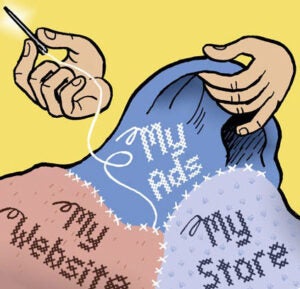 If Facebook wants to grab budgets from TV media planners, it has to speak their language.
If Facebook wants to grab budgets from TV media planners, it has to speak their language.
To make buying and measuring digital video ads easier for TV buyers, Facebook has unveiled support for TRP [target rating point] buying this week.
TRP buying enables advertisers to plan, buy and measure online video and TV campaigns holistically. Media planners can allocate a portion of TRPs to Facebook and then measure performance in an apples-to-apples fashion, since the numbers are verified through the Nielsen Total Ad Ratings system.
“Advertisers and marketers alike need a common language around metrics to be able to cross-reference and compare various activations in this multichannel world,” explained Ronalee Zarate-Bayani, head of digital advancement for The Hershey Co., which tested TRP Buying.
Having a unified metric will also help Facebook tap into television budgets, a $40 billion advertising market that’s been facing pressure as consumers watch TV less and add more screen time.
Facebook is making the case that adding its digital video will amplify the reach and effectiveness of TV campaigns. “Adding” is the key term here. Marketers don’t expect to move away from TV.
“It’s really about the combination of TRP plus TV GRP,” Zarate-Bayani said. When Hershey’s tested TRP buying for Facebook’s video ad space for its Brookside line of chocolates in August, it saw lift in ad recall and purchase intent, though it didn’t specify how much.
While speaking the same language may be a positive first step, Facebook faces challenges. TV budgets may not be reallocated to digital video at the clip those on the digital side would like, and questions remain about the effectiveness of digital video as a medium.
For one, TV GRPs don’t control for frequency, and that could be an issue in digital environments.
“There is the potential for [Facebook] to deliver very high TRPs but with low reach and high frequency in a short period of time,” said Richard Joyce, senior analyst in programmatic media for Forrester Research. “How are marketers going manage [TRP buying] without wasting media?”
There’s also the niggling question of whether a mobile video has the same impact as a TV ad on a big screen. Joyce cited a study by Innerscope that showed that video ads on Facebook were four times less engaging than TV ads.
AdExchanger Daily
Get our editors’ roundup delivered to your inbox every weekday.
Daily Roundup
“How are marketers going to use that medium in the same way to drive emotion through sight sound and motion, knowing that, for the most part, they’ve found that it’s not as engaging as what you would get from TV?” Joyce asked.
But if consumers aren’t watching TV as much, that may be a moot point.
“Mobile video is a key point of disruption,” said Dentsu Aegis CEO Nigel Morris. Testing TRP buying enables the agency to “match dramatically changing consumer behavior.”
As digital media companies adopt metrics that look and feel like TV – Facebook’s TRP being one – some have said this is a step backward. That, in fact, it’s TV that needs to adopt the precision and addressability of digital.
But for marketers, there’s real power in unifying metrics, no matter the unit of measurement.
“This is not about taking a step back from the great targeting opportunities that digital offers,” Zarate-Bayani said, “but more about making these targeting capabilities accessible to more folks because it’s in a language that many others are accustomed to.”













